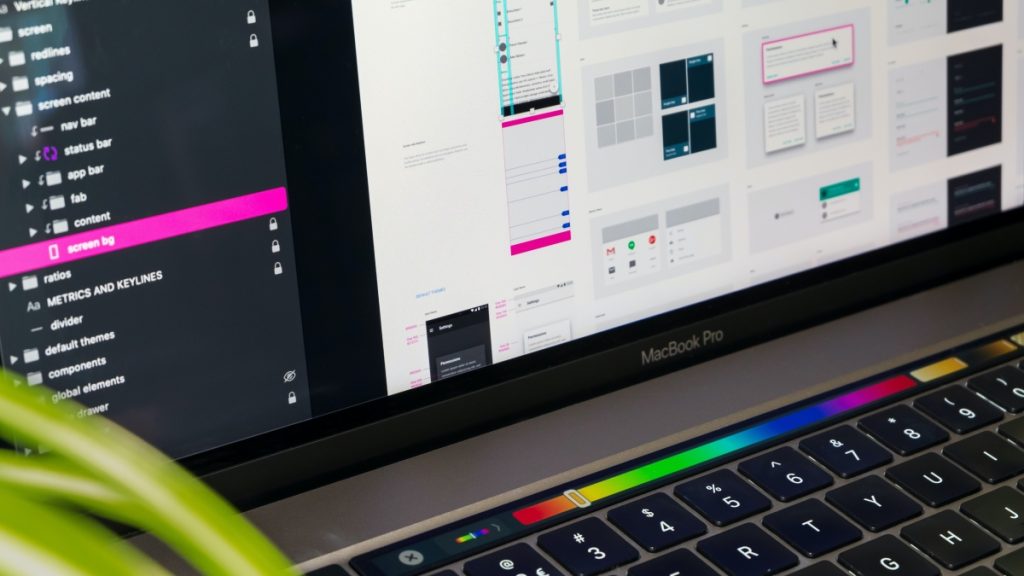
One of the best things about working in digital is that the industry is always evolving. New trends arrive, user needs change and things move forward. The COVID 19 pandemic has turbocharged the evolution of digital commerce. So the only thing you can guarantee is that change is the only constant.
We have looked at the trends driving SEO and paid marketing forward. But now it is time to look at UX design trends. But we are going to take a wider view than just 2022/23.
So get ready for more wild speculation as look at where UX design might be going over the next few years.

UX Design Trends – The Importance Of Storytelling
Storytelling is an undervalued skill in general business. Telling captivating stories can help you to grow your business, improve internal communications and create powerful marketing creative.
But we are focusing on the next frontier of UX design here. So what does storytelling have to do with that?
Well as it turns out, quite a lot!
There are two factors to this. One is the increasing importance of good UX writing and the other is the need to get people to scroll on mobile websites.
Scroll and lol?
When you visit most mobile websites you are often presented with very similar information. Say, for example, you want to visit a local cafe. You will search for one in your area which might have a nice website that has some big slogans on it with a “mission” and some reviews. You have to keep scrolling around to get the information you want. So far, so very boring.
Many mobile websites are now structured in this way. There is a slogan block, some other information, a values block, another slogan, some reviews…people do not really notice or engage with it anymore.
As the cafe site is not offering anything new to the user, that might lead to them being compared to the closest big coffee corporation on the basis of price. And that is a battle that the local cafe does not want to have.
As users the expectation is that we keep scrolling with almost no incentive to keep doing so. Other than the promise we might get what we want at the end of it.
This is where storytelling comes into the picture.
Stories Are What Drive Us To Make Decisions
What if the cafe website told a story that would keep you scrolling and make you feel something while you are just looking for that local cup of coffee. What if they tell a story that actually engages you emotionally? Instead of “best local coffee” as a slogan, the site tells you the story of how the young entrepreneur set up the cafe because of memories from a beloved family member. Each time you scroll the story reveals itself and tells you more about how the local cafe is unique and different from big coffee corp who are on the same street.
You would probably visit the local independant cafe. Just to see what it’s like.
That’s the power of storytelling. If you can make a user feel something every time they scroll, you are going to engage them. If you can make someone smile (or Laugh Out Loud) you have a good chance of gaining a loyal customer and possibly even a brand evangelist.
So it is now necessary to combine the UX navigation act of scrolling with storytelling. In fact it may be that you need to come up with a metric for this, like time to emotion for example, to help with your UX stickiness and even processes like onboarding. You could make your time to emotion metric as short or long as possible. Whatever works for your brand or value proposition.
Storytelling can be applied at every point of the purchase funnel and it needs to be integrated with a smooth user experience.
Storytelling needs great visuals and copy to bring it to life. So make sure your UX writers are involved right from the start! They are the authors of your story, so an integrated design team with a writer can help you craft digital experiences that are propelled with narrative.
Actions You Can Take:
- Integrate UX Writers into your UX design teams
- Think about what your story is
- Craft a story that can be broken down into steps
- Use these steps as scroll points
- Use “time to emotion” or a similar metric to make sure your story is engaging

UX Design Trends – Conversational Design
When the pandemic was in full swing we were all living with lockdowns and restricted movement. Technology became the only way we could connect with the world. Many people at this time worked remotely, so it would be normal to spend hours every day on IM applications like Slack or the usual social media applications like Facebook.
So we as humans got very used to spending hours a day, maybe even alone, typing words into a machine and getting messages back. By extension, this means that we are a lot more comfortable with chatbots and online IM-based customer sales/support than we used to be.
So conversational experiences are now the norm in just about every online commerce niche. So brands that understand the value of human-like conversations within the interfaces they present to the user will reap rewards. Customers are more likely to convert in purchase funnels that utilize chatbots correctly. So designing these conversations to be engaging will become an even bigger part of a UX design team’s remit.
UX writers also have a stake in conversational design. They will largely be responsible for ensuring consistency in tone of voice on an AI chatbot’s responses or writing certain parts of a script for online support staff. So make sure you involve UX writers in your conversational design process.
Actions You Can Take:
- Conversations are becoming a bigger part of the purchase funnel
- Present conversations to your users in a way that makes them comfortable
- Make the design feel as human as possible
- Make sure users get what they need from each conversational interaction
- While the AI chatbot itself does not fall under UX, it’s presentation does
- UX writers should have a had in the AI chatbot design process to ensure tonal consistency

UX Design Trends – Experiences Get More “App-like”
The world is very used to apps at this point. Mobile applications have been around a long time.
Where applications have the edge on websites generally is their high level of interactivity. Interaction, animation and dynamic experiences are more or less the norm in the app space.
This has now started to bleed into web design. More front-end driven experiences can now be found so it is only sensible that bringing an app “energy” to web design would be an ever increasing trend. With other factors like personalization, app-like web design solves problems for both businesses and the user. Users demand dynamic, personalized experiences whenever they shop on whatever device they shop on. App-like design helps businesses to serve this need at scale.
The rise of no-code and new UI tools has also opened up digital experience design beyond usual design and development teams. This means companies can be more agile in the digital experiences that they offer to their customers. It is now possible to create a one-page interaction focused online experience without tying up UX, design and development teams for weeks on end.
This also makes experiments more feasible and more useful. For example if you wanted to conduct storytelling tests, one page app-like sites would be perfect for your experiments.
Actions You Can Take:
- Experiment with no-code tools to create small, interaction driven sites
- Use these sites for running tests to refine different aspects of your online experience

Talk to MAQE
If you need help with any aspect of UX, or adapting to new UX design trends, talk to MAQE. We offer UX research services so you can better know your customers, narrative consultation to help your brand storytelling and a full suite of design and development services to help you bring your vision to life. Get in touch via [email protected].
